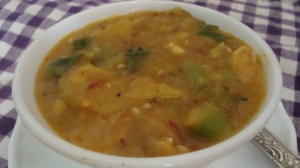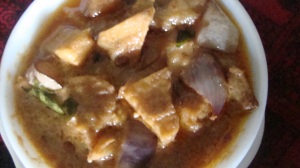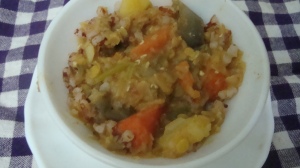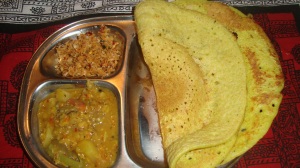Today is my mother’s birthday and I felt like re-sharing one of my mother’s favourite recipes. Odiyal Kool is a traditional dish from north Sri Lanka and can be made as a vegetarian or non-vegetarian version. Today’s recipe is a vegetarian dish.  For today’s music feature, I wish to share some song clips from youTube from the official vevo site of one of my favourite singers – Andrea Bocelli. The first is a music video of the song ‘Canto Della Terra’. The second song ‘Con Te Partiro’ is from a 2011 concert. I liked more an earlier version, where he sings with Sarah Brightman, but could not find it on the official site. The last clip is the music video of the song with Laura Pausini ‘Dare to Live’. Hope you enjoy the music and the recipe!
For today’s music feature, I wish to share some song clips from youTube from the official vevo site of one of my favourite singers – Andrea Bocelli. The first is a music video of the song ‘Canto Della Terra’. The second song ‘Con Te Partiro’ is from a 2011 concert. I liked more an earlier version, where he sings with Sarah Brightman, but could not find it on the official site. The last clip is the music video of the song with Laura Pausini ‘Dare to Live’. Hope you enjoy the music and the recipe! 
Odiyal Kool
- Odiyal Flour – 1 cup
- Chopped mixed vegetables (brinjal/ katharikkai, jackfruit seeds/ palakottai, yardlong beans/ paithangai, small green leaves/ pasali keerai or murungai ilai, manioc, ash plantain) – 100g each
- Boiled rice – ½ cup
- Dried red chillies – 5- 10, according to your taste
- Cumin seeds – 1 tbsp
- Pepper powder – 1tbsp
- Tamarind extract – ½ cup
- Turmeric powder – ½ tsp
- Salt to taste
- Water – 1 1/2 litres
Method:
- Dry grind the cumin seeds, red chillies and pepper and keep aside.
- Boil the vegetables in a pot with half litre water.
- Add another litre of water, along with the tamarind extract.
- As the water comes to a boil, slowly stir in the odiyal flour, avoiding lumps.
- Add the boiled rice to the pot.
- Add the ground spice mixture and the turmeric powder to the pot and salt to taste. Let it come to a boil.
- You can add a little water to adjust the consistency to your liking, e.g. if the water has dried up or you prefer a watery Kool.
- Serve hot in medium-sized bowls.
Recipe Source: Raji Thillainathan.











